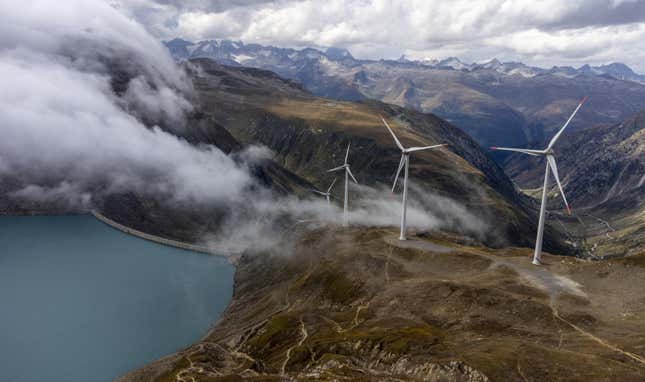
In the wake of a year when consumer energy prices across Europe skyrocketed, making it difficult for some people to heat their homes or cook, the European Commission today announced a new power market plan with ambitious targets: phase out gas, the fossil fuel that underpins much of the bloc’s power production, and dramatically increase energy from renewable sources.
The plan points explicitly to Russia’s “manipulation” of power markets, referring to its cutting off or limiting supply of gas to other countries following the full-scale invasion of Ukraine in 2022 as one of the factors behind the policy shift.
Kadri Simson, commissioner for energy, said in a statement that “tight global supply and Russia’s manipulation of our energy markets has left many consumers facing massive increases in their energy bills.”
Renewable capacity and flexibility
“To reach our energy and climate targets, the deployment of renewables will need to triple by the end of this decade,” the plan released today states. Both wind and solar energy are mentioned, but there’s no word on exactly where the tripling in generation capacity will come from.
The plan also says that Europe will try to phase out the use of gas, arguing that move should be accelerated but not giving a timeline or saying when it will be completely removed from the European Union’s energy system. Nor does it mention coal, which accounted for 14% of the EU’s power generation in 2021, according to the World Economic Forum, and is still the main source of power in Germany, Poland, and some other European countries.
Although the renewable industry will be stimulated with more favorable incentives, the European Commission also put forward ideas about how to make the system more flexible for consumers. It suggested, for example, allowing people to sell excess rooftop solar power directly to their neighbors, and to invest more directly in wind and solar parks.